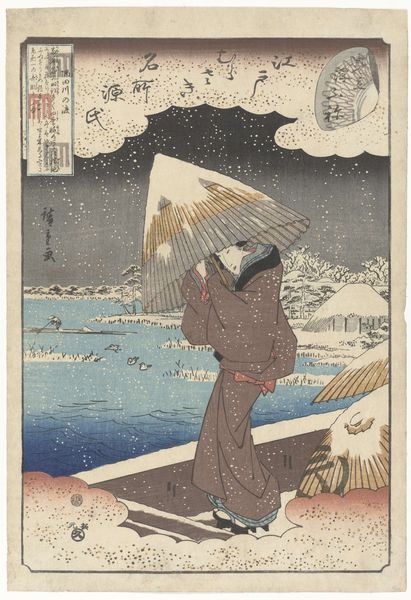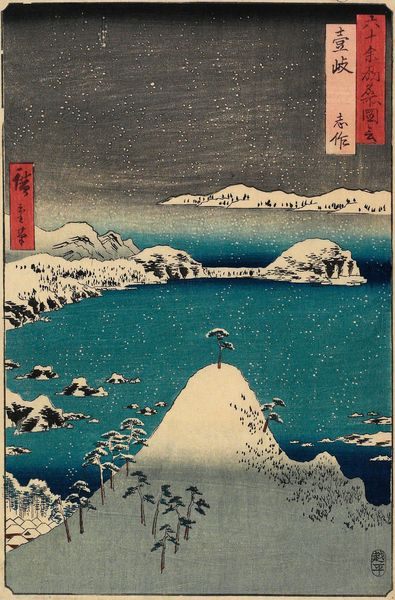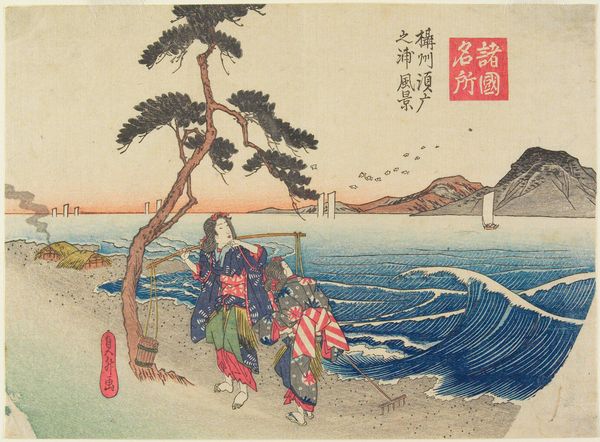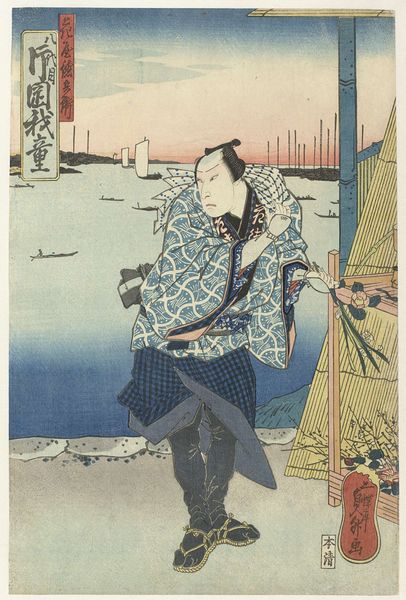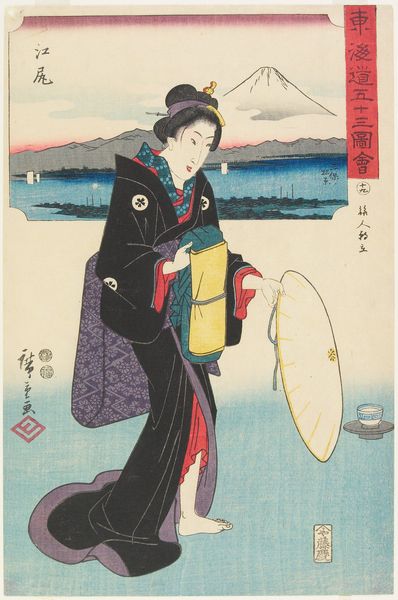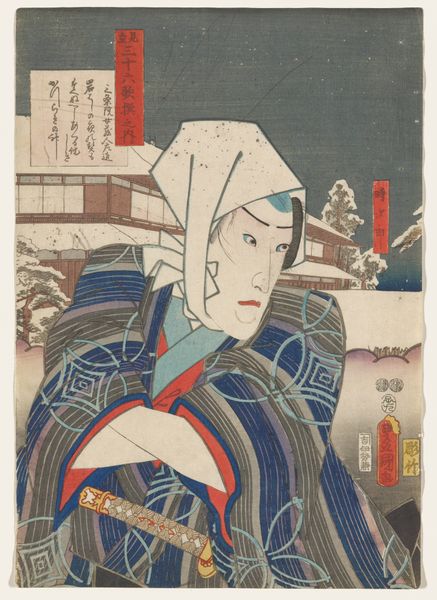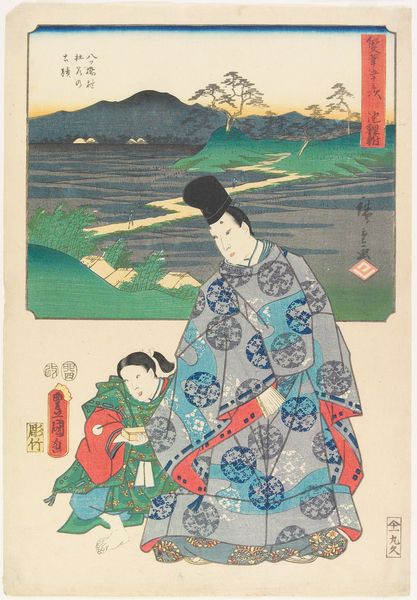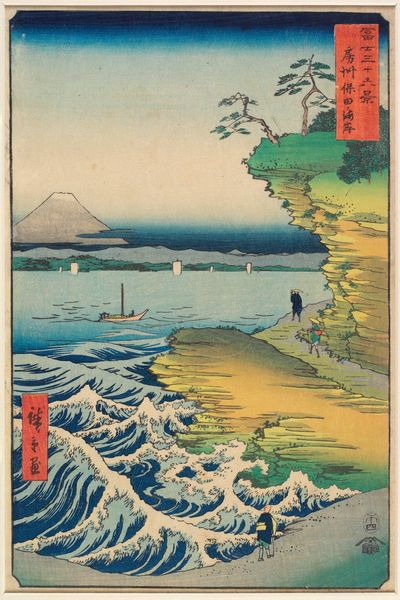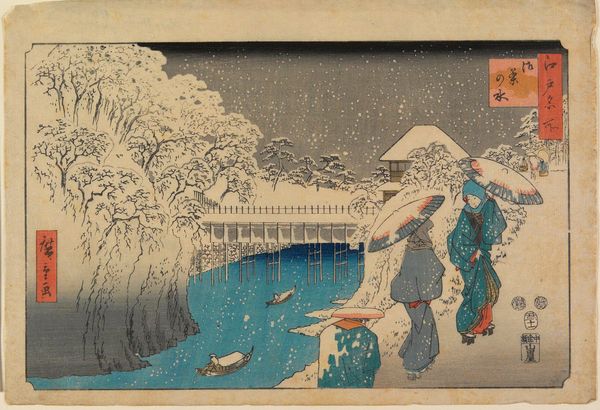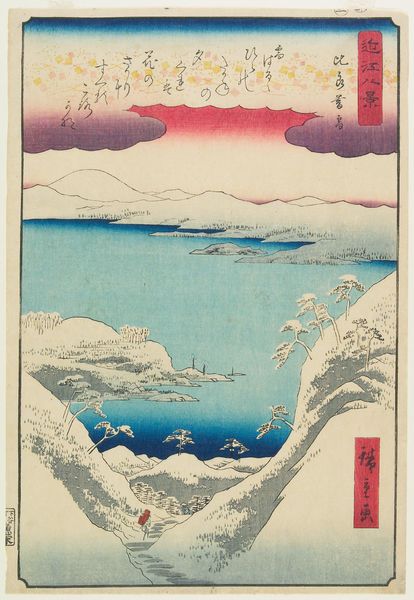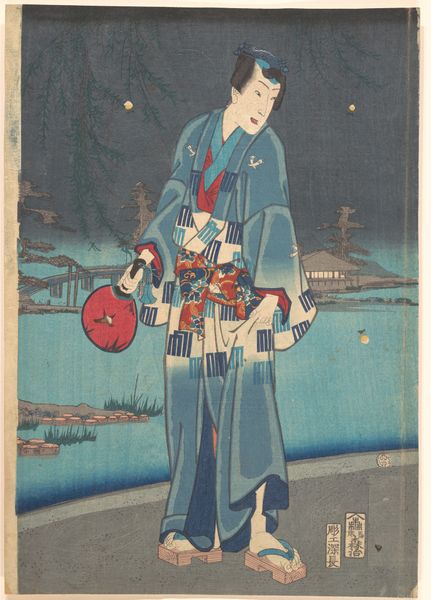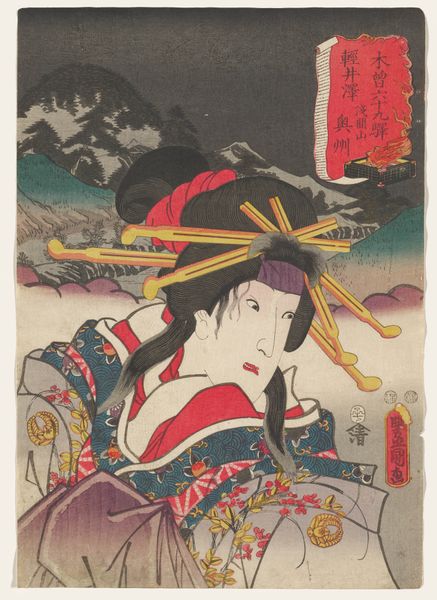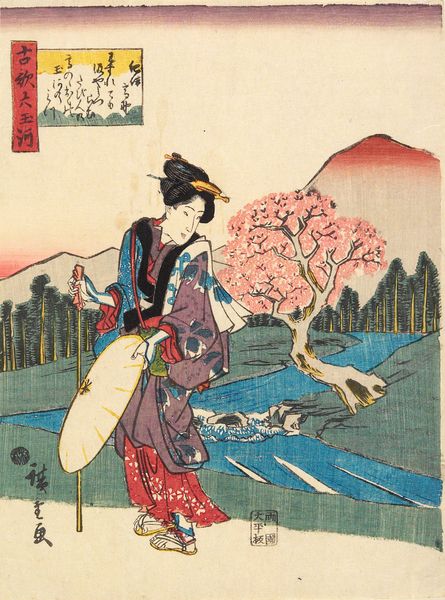![Noda [Jewel River] in Mutsu Province by Utagawa Hiroshige](/_next/image?url=https%3A%2F%2Fd2w8kbdekdi1gv.cloudfront.net%2FeyJidWNrZXQiOiAiYXJ0ZXJhLWltYWdlcy1idWNrZXQiLCAia2V5IjogImFydHdvcmtzL2M2MmU3YWY5LWEzYmItNDY0Yy04YmEyLTRjN2NkZTZjYjk3Mi9jNjJlN2FmOS1hM2JiLTQ2NGMtOGJhMi00YzdjZGU2Y2I5NzJfZnVsbC5qcGciLCAiZWRpdHMiOiB7InJlc2l6ZSI6IHsid2lkdGgiOiAxOTIwLCAiaGVpZ2h0IjogMTkyMCwgImZpdCI6ICJpbnNpZGUifX19&w=3840&q=75)
Noda [Jewel River] in Mutsu Province c. 1844 - 1846
0:00
0:00
print, ink, woodblock-print
# print
#
asian-art
#
landscape
#
ukiyo-e
#
ink
#
woodblock-print
Dimensions: 9 7/8 × 7 in. (25.1 × 17.8 cm) (image, vertical chūban)
Copyright: Public Domain
Utagawa Hiroshige created this print of Noda in Mutsu Province using woodblock printing, a quintessential technique of the Edo period. The process begins with a drawing, which is then transferred to a woodblock, usually cherry. A carver then meticulously cuts away the areas that will not be inked, leaving a raised surface. Separate blocks are required for each color, demanding incredible precision to align them correctly. The paper, often handmade, is then carefully pressed against the inked block to transfer the image. Consider how the limitations of this technique influence the aesthetic. The flat planes of color, the crisp lines, and the stylized forms are all direct results of the carving and printing processes. This wasn't just a commercial process; it was a highly skilled craft, requiring years of training to master. Woodblock prints were relatively affordable, bringing art to a wider audience, and playing an important role in the development of a visual culture that was accessible to all social classes. It’s a testament to the power of art, made through skilled labor, to represent and shape society.
Comments
No comments
Be the first to comment and join the conversation on the ultimate creative platform.

